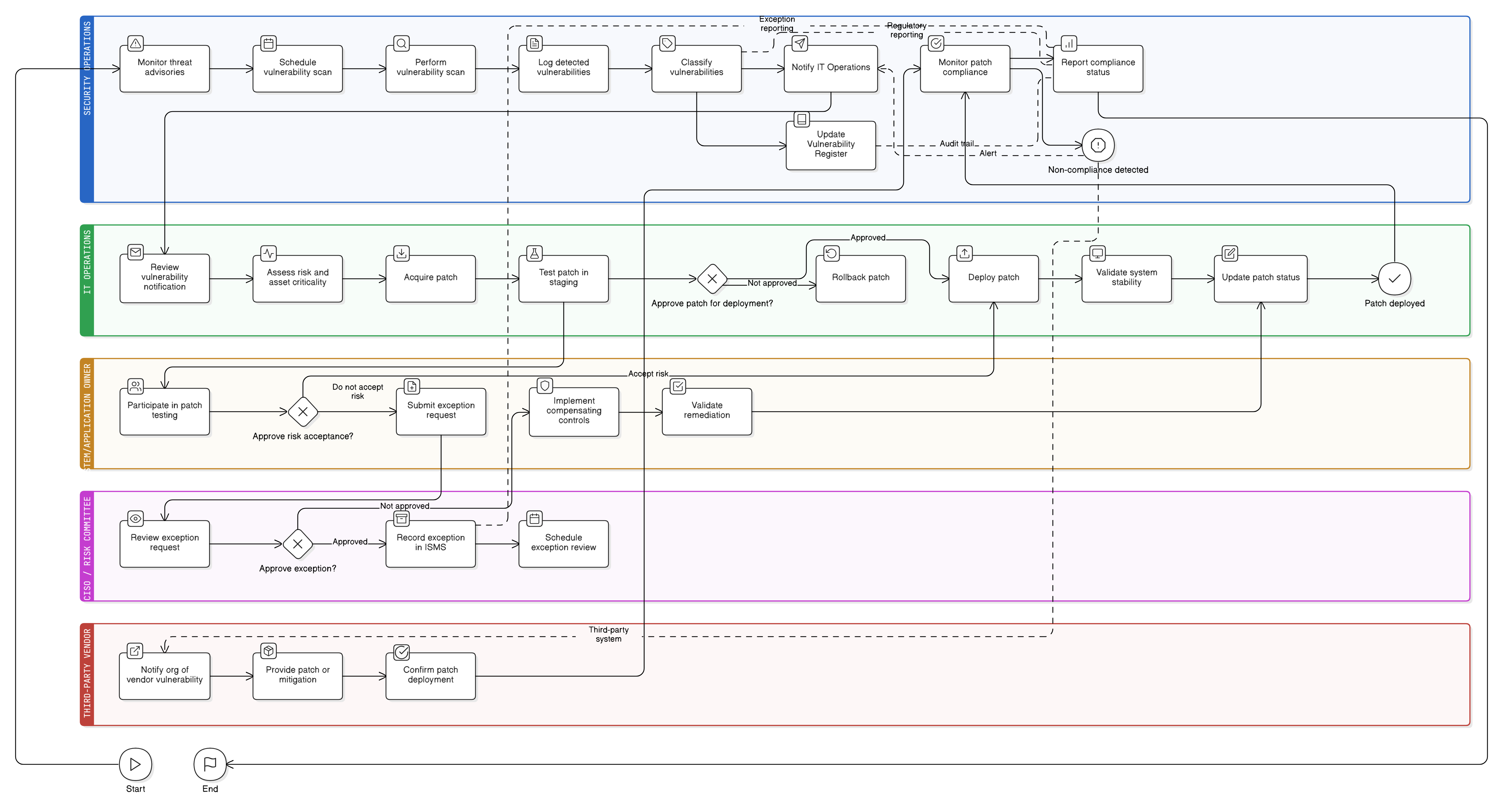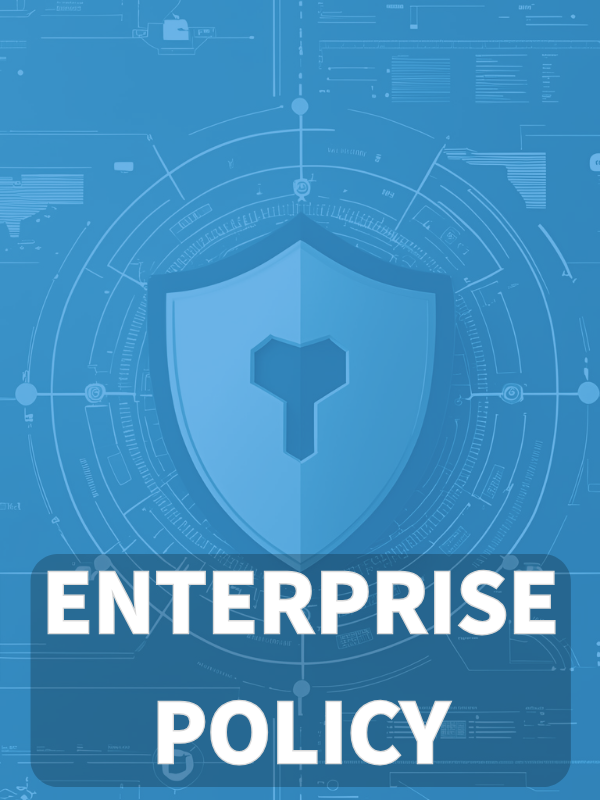Overview
This policy establishes mandatory requirements for identifying, assessing, and remediating technical vulnerabilities and software flaws across all relevant IT systems. It enforces risk-based patch management, clear roles and responsibilities, exception procedures, and compliance with global standards to reduce risk and ensure operational resilience.
Risk-Based Remediation
Ensures vulnerabilities are identified, prioritized, and remediated based on business impact and operational risk.
Comprehensive Asset Coverage
Applies to all IT systems including endpoints, cloud, IoT, and third-party services within the ISMS scope.
Defined Roles & Accountability
Clear responsibilities set for IT teams, asset owners, vendors, and security leaders with escalation and audit processes.
Aligned with Global Standards
Policy mapped to ISO/IEC 27001, ISO/IEC 27002, NIST, GDPR, NIS2, DORA, and COBIT requirements.
Read Full Overview
Policy Diagram

Click diagram to view full size
What's Inside
Scope and Rules of Engagement
Severity-Based Patch Deadlines
Vulnerability Scanning and Detection
Governance and Role Assignments
Patch Exception Handling
Third-Party and SaaS Risk Oversight
Framework Compliance
🛡️ Supported Standards & Frameworks
This product is aligned with the following compliance frameworks, with detailed clause and control mappings.
Related Policies
Information Security Policy
Establishes the overarching commitment to protect systems and data, which includes proactive management of vulnerabilities and assurance of software integrity.
Change Management Policy
Governs all patch deployment and configuration adjustments, requiring documentation, testing, approval, and rollback procedures that complement vulnerability remediation processes.
Risk Management Policy
Supports the classification and treatment of unremediated vulnerabilities through structured risk assessments, impact analysis, and residual risk acceptance procedures.
Asset Management Policy
Ensures systems are inventoried and classified accurately, enabling consistent vulnerability scanning, ownership assignment, and lifecycle patch coverage.
Logging And Monitoring Policy
Defines requirements for event detection and audit trail generation. This policy supports visibility into patching activity, unauthorized changes, and exploit attempts targeting known vulnerabilities.
Incident Response Policy
Specifies escalation protocols and containment strategies for exploited vulnerabilities, breach investigations, and corrective actions aligned with this policy’s controls.
About Clarysec Policies - Vulnerability and Patch Management Policy
Effective security governance requires more than just words; it demands clarity, accountability, and a structure that scales with your organization. Generic templates often fail, creating ambiguity with long paragraphs and undefined roles. This policy is engineered to be the operational backbone of your security program. We assign responsibilities to the specific roles found in a modern enterprise, including the CISO, IT Security, and relevant committees, ensuring clear accountability. Every requirement is a uniquely numbered clause (e.g., 5.1.1, 5.1.2). This atomic structure makes the policy easy to implement, audit against specific controls, and safely customize without affecting document integrity, transforming it from a static document into a dynamic, actionable framework.
Enforced Patch Deadlines
Mandates strict patch deployment timelines by severity, minimizing window of exposure for high and critical vulnerabilities.
Exception & Compensating Controls
Allows formal exception requests with compensating controls, enabling flexibility while maintaining accountability.
Continuous Audit & Monitoring
Requires frequent audits and real-time patch compliance reporting for persistent risk reduction and evidence of control.
Frequently Asked Questions
Built for Leaders, By Leaders
This policy was authored by a security leader with 25+ years of experience deploying and auditing ISMS frameworks for global enterprises. It's designed not just to be a document, but a defensible framework that stands up to auditor scrutiny.
